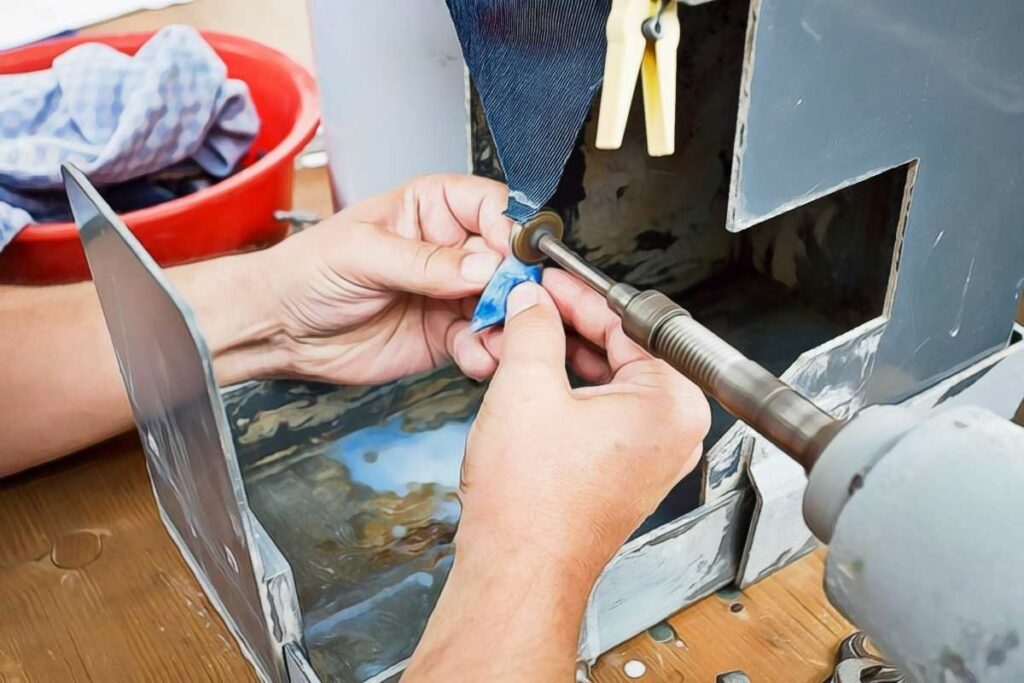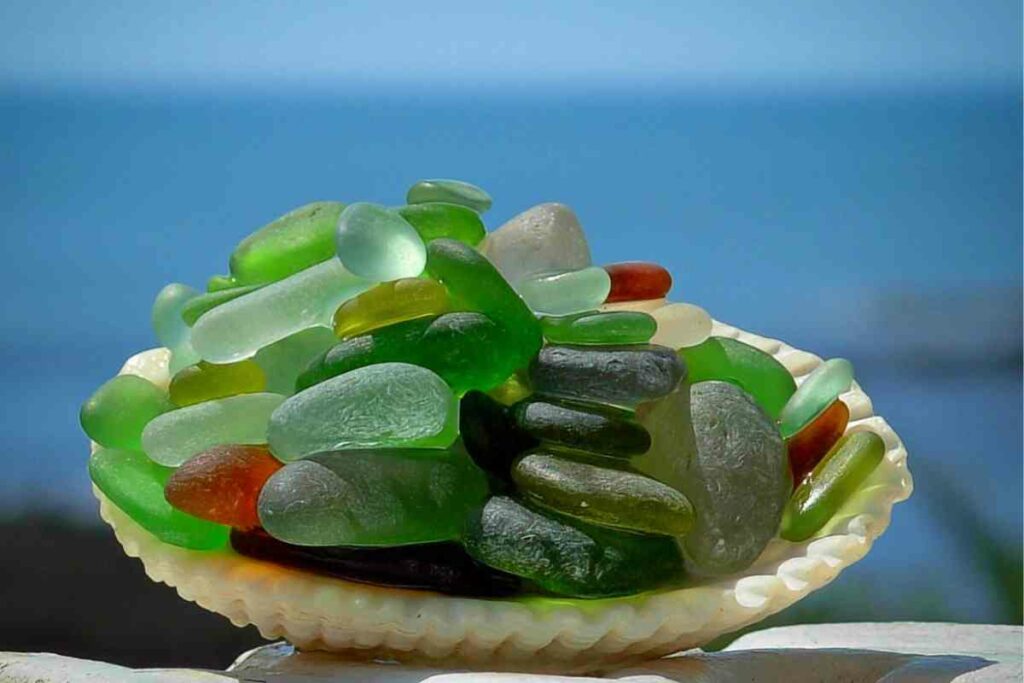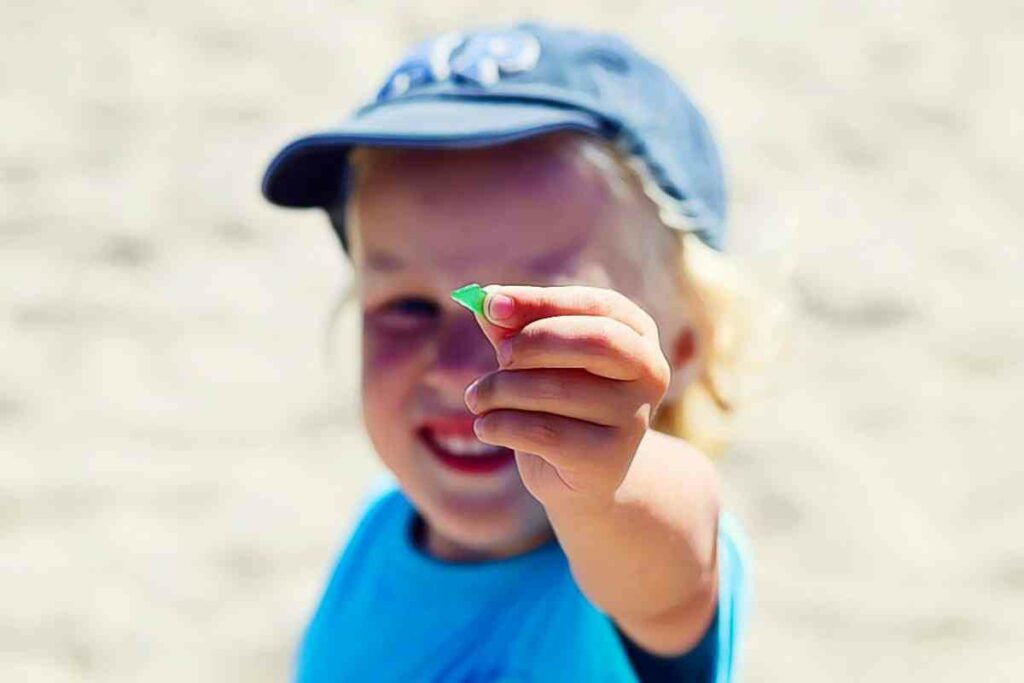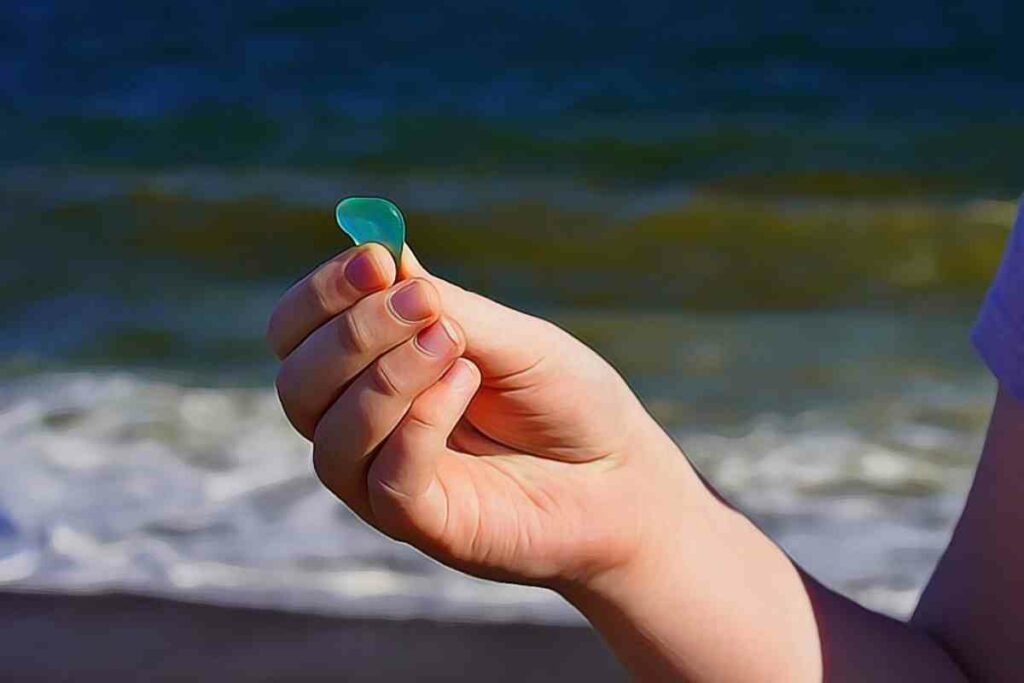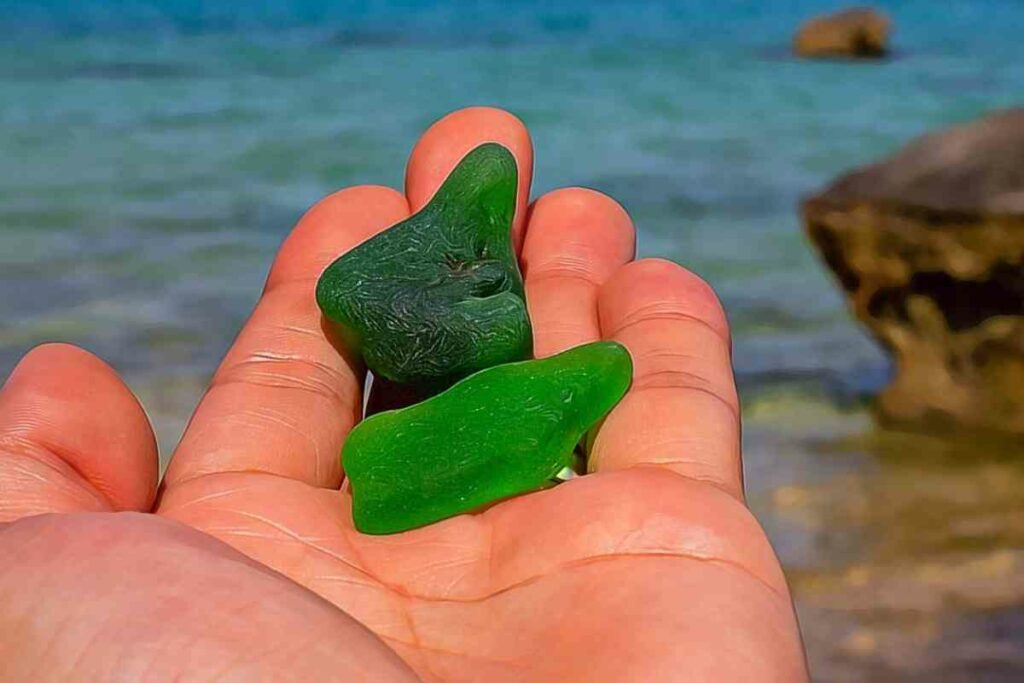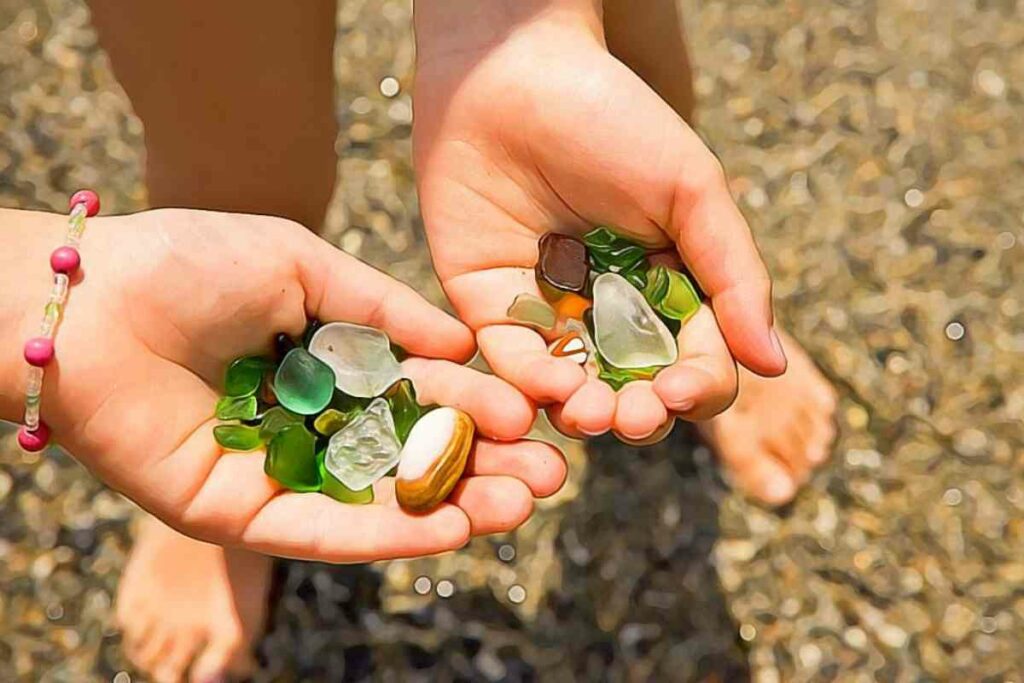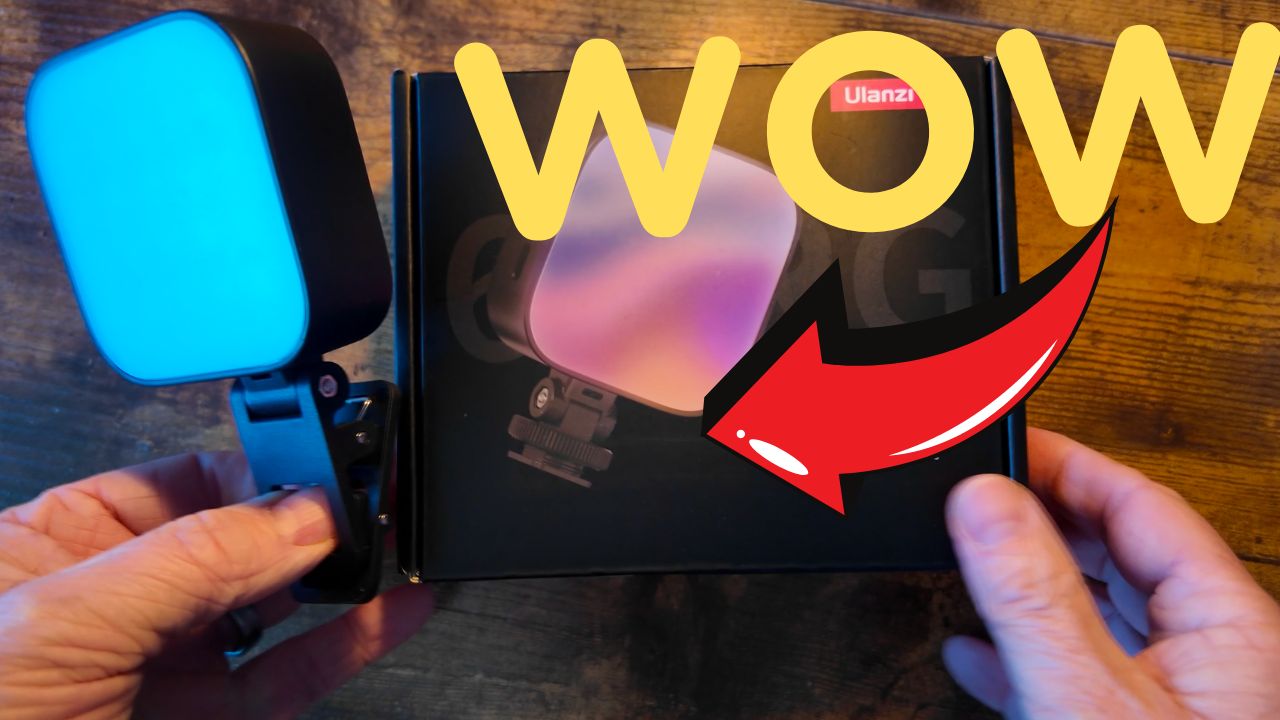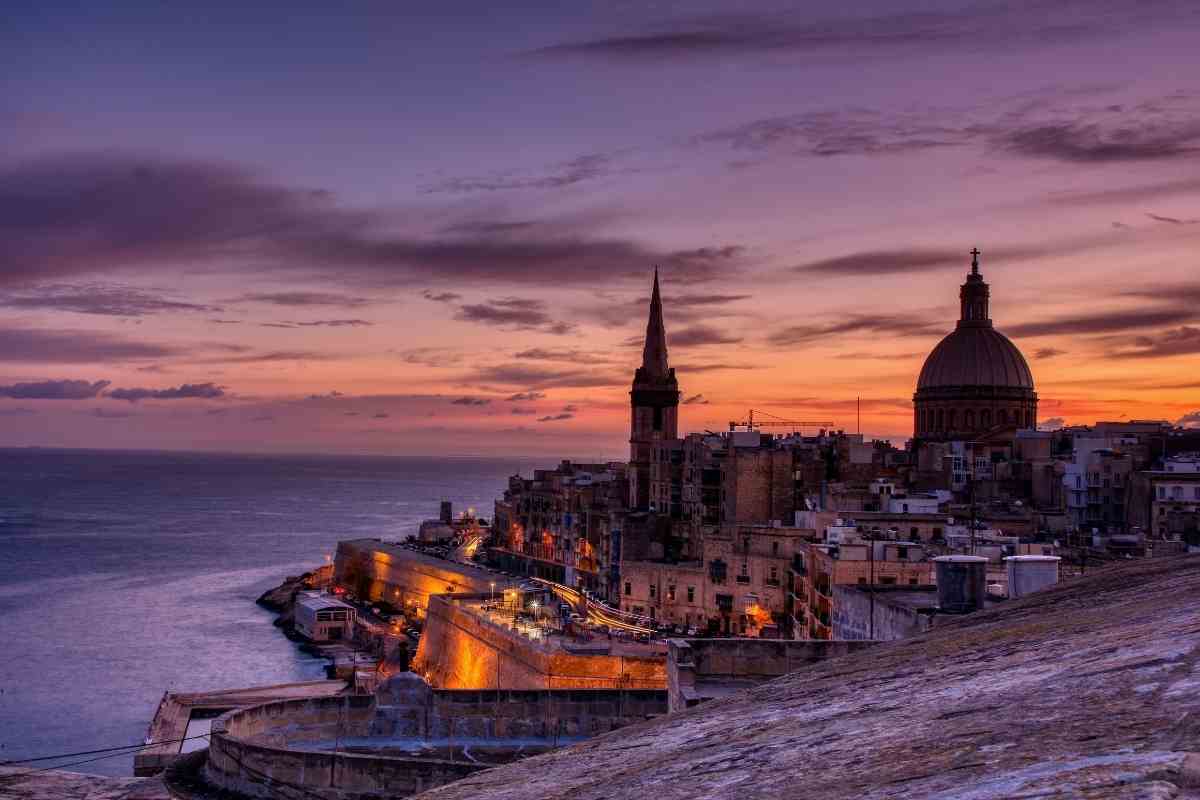Sea glass, or beach glass, are gems that look like colorful stones, normally found and collected on beaches.
Their colors are a fascination and are often discussed in circles of sea glass collectors.
There are so many sea glass colors, with their values attached to their rarity.
History of Sea Glass
Sea glass has been popular for a few decades now, maybe five, maybe six.
They are a result of the disposal of glass materials in seas during the 19th and 20th centuries, when glass containers were being mass-produced.
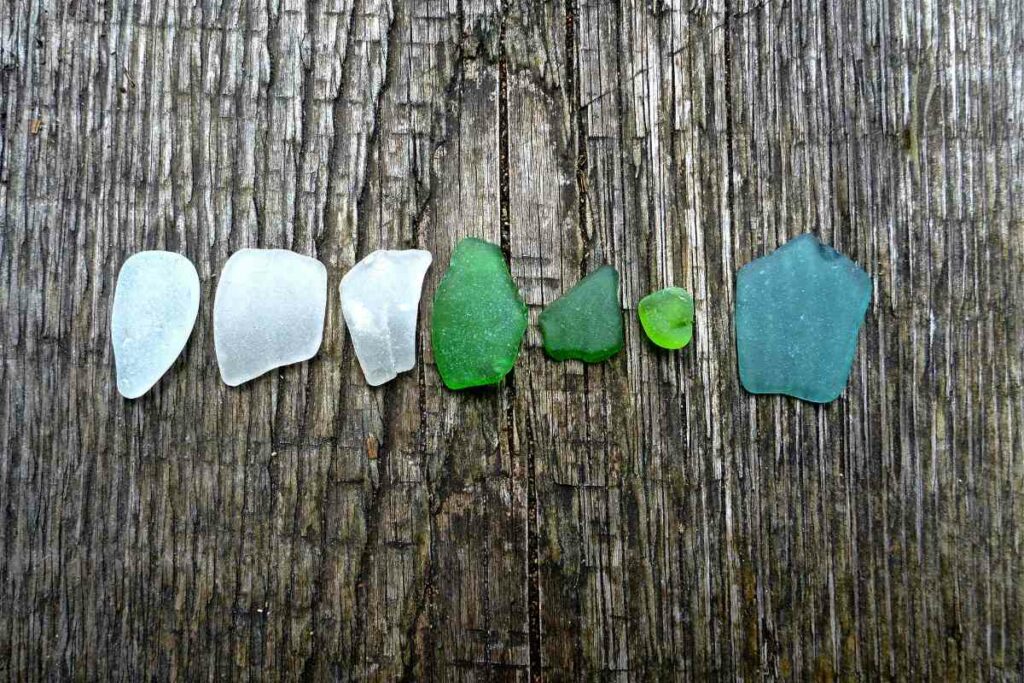
It was also a time when garbage-disposal systems had not been intricately put in place. Back then people would dump things in the sea and expect them to drown.
There are not that many sea glass pieces anymore because the cheaper plastic option has replaced glass containers. So, the gems are becoming rarer and rarer by the day.
How Sea Glass is Formed
Sea glass is a product of both human activities and natural occurrences.
In other words, they are products of both nature and man. Glass is a man-made product – it is the result of mixing raw materials such as sand, limestone, and soda ash in very high temperatures.
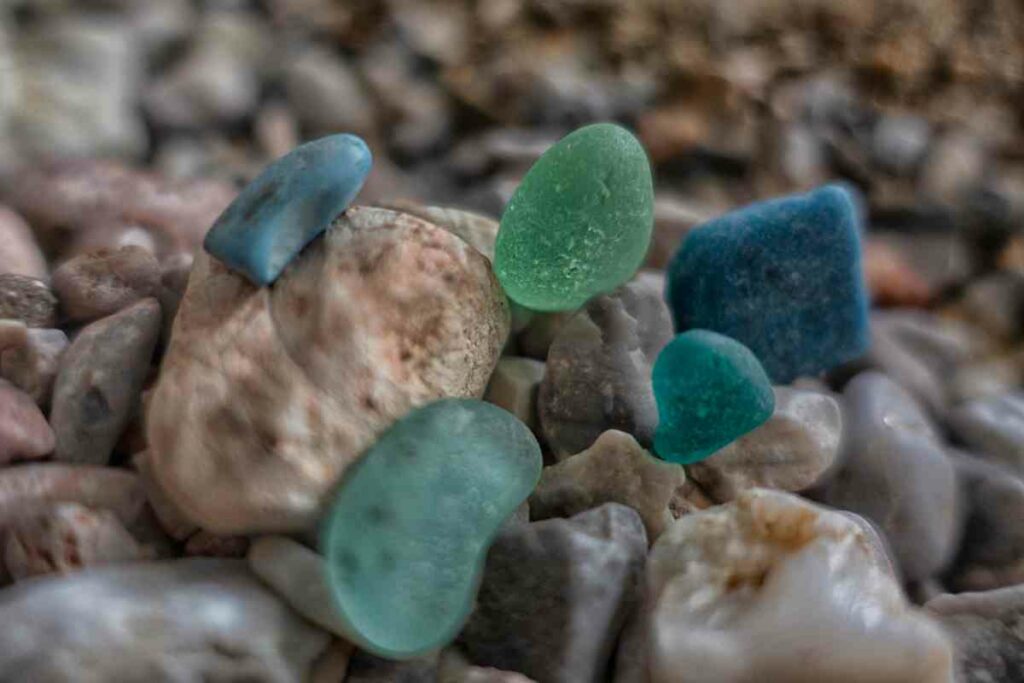
As stated above in the article, glass was the most used container of the nineteenth century.
Soda bottles, food containers, vases, and tableware were all primarily made of glass.
Consequently, glass formed a bulk of waste materials, which would be disposed of at sea.
Over time, the glass pieces were washed and polished by the waves and currents of the sea. Thus, the rough edges of glass pieces become smoother, and the glass surface gets frosty due to exposure to salt and water.
The glass pieces are then washed offshore by currents, where collects and sea-glass enthusiasts find them.
Each sea glass is unique in its shape, appearance, and even color as each is exposed differently to waves, pH value of water, rocks, and sand texture.
The Rarity of Colors of Sea Glasses
Thereare so many colors of sea glasses out there. Some colors are more common than others, though. The rarer the color, the higher its value.
People tend to get pulled towards scarce commodities, which increases demand, and hence, the value of that commodity.
The rarity of colors of sea glass can be based on a bunch of factors, such as the source glass and location.
A good example would be lavender sea glass. While it is generally rare, you can easily find it in Maine and Canada.
The rarity of sea glasses can be divided into three major categories:
- Ultra-rare
- Rare
- Common colors
Ultra Rare Sea Glass Colors
These are the rarest colors of sea glass out there.
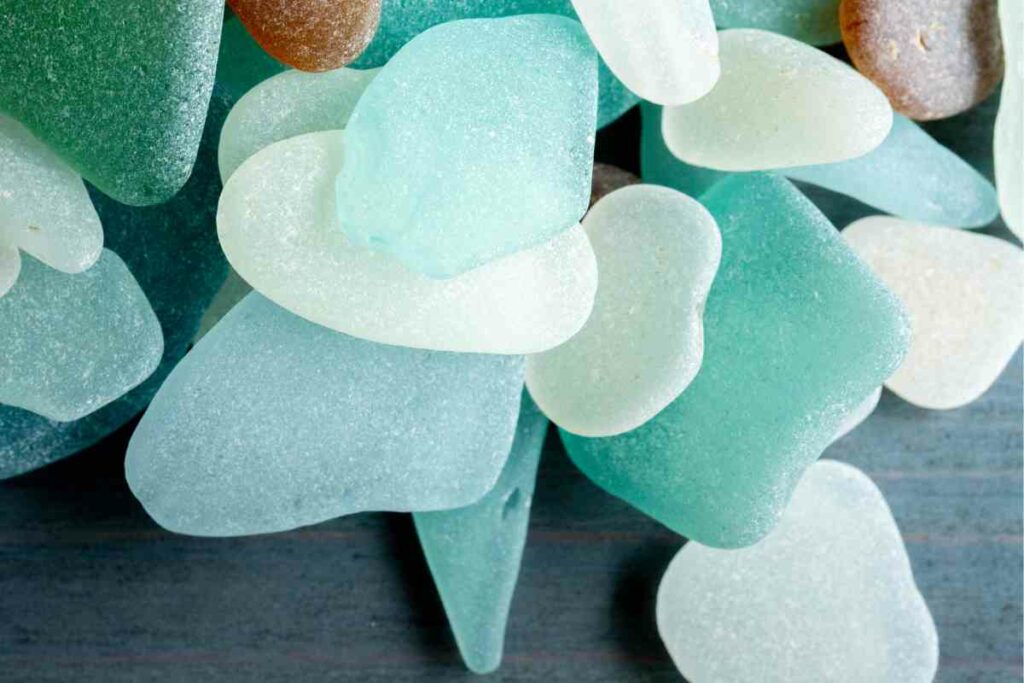
There are seven of them:
- Orange: Orange is the rarest of sea glass colors. This is because orange glass is not commonly produced. Most of these sea glasses come from vases and decorative tableware.
- Turquoise: Turquoise sea glasses are the second rarest. Just like orange, turquoise glass is barely produced. The glasses come from the remains of decorative glassware, vases, and seltzer bottles thrown at sea.
- Red: The third rarest sea glass color is red. It is also the most sought-after, as red is a popular, emotional color. For that reason, red sea glass pieces are dubbed collectors’ Holy Grail. They are products of tableware, bottles, and warning lights thrown at sea.
- Yellow: Yellow is the fourth-rarest color for sea glasses. It is rare because yellow is not the most preferred color for bottles, so there were not that many yellow glass bottles. They come from disposed tableware and art glass.
- Black: The fifth rarest color for sea glass is black. Note that some of these black glasses are not actually black; they will be more of a dark olive green when placed in the light. Black glass bottles were used for packaging beer and other types of liquor up till the 1870s.
- Teal: Teal sea glass is the sixth rarest color of sea glass. Most of it is derived from bottles used for wine, ink, and mineral water. These bottles were produced between the 1870s and the 1910s.
- Gray: The most available color in the ultra-rare category is gray. The original source for this sea glass is crystal tableware that was produced between the 1800s and the 1940s. There are several shades of this color, with darker hues having the most demand.
Rare Sea Glass Colors
While also hard to find, sea glass colors in the rare category are more easily available than those in the ultra-rare category.
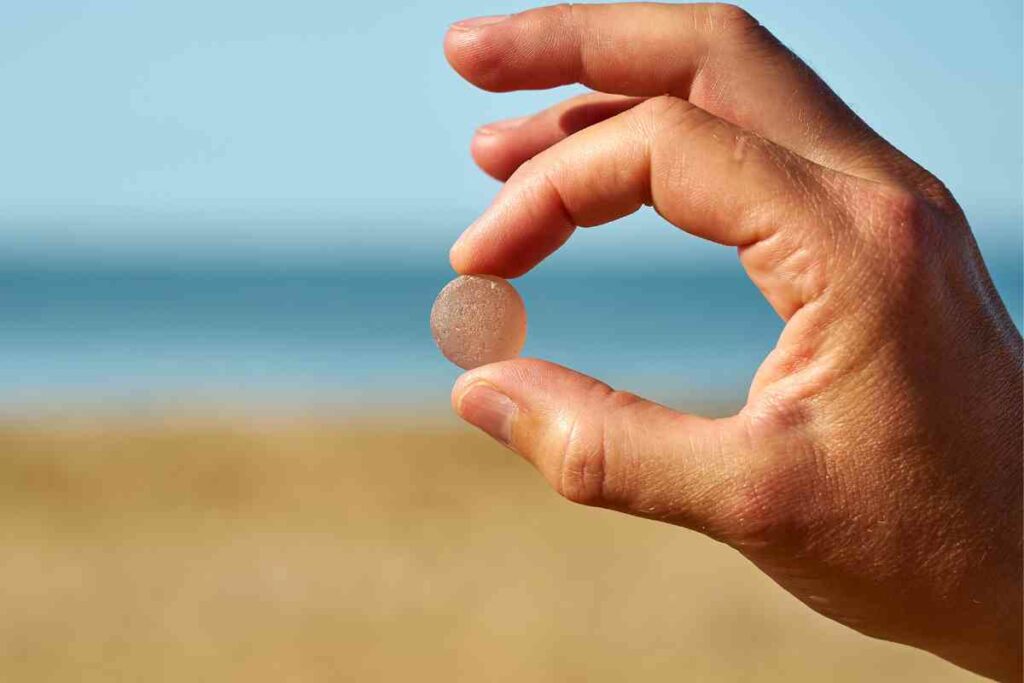
Sea glass colors in this category include pink, aqua, lime green, lavender, and cobalt blue.
- Pink: Pink glass was mostly used during the depression era for house-ware items. The pink is a result of decoloring clear glass with selenium. When exposed to the sun, the glass develops a soft pastel yellowy pink. Pink sea glass is very popular with jewelry.
- Aqua: Aqua sea glass was the most widely used color before the 1920s. It originates from electrical insulators, bottles, and fruit jars. There are two hues of aqua sea glass – light and dark. More people prefer the darker hue. Of late, there has been a diminishing supply of genuine aqua sea glass.
- Lime green: There is at least one lime green sea glass out of every 500. Also known as chartreuse glass, this color of glass was mostly used in soda bottles in mid 20th century, most specifically the old coca-cola bottle. While it is rare, it is more common in UK beaches than other beaches worldwide.
- Purple/ lavender: Lavender sea glass is mostly from the WWI era. While it is abundant in some areas, it is non-existent in others. Essentially, expect to find one lavender sea glass in every 500. True purple glasses are rarer, with a ratio of one to 5000 sea glass pieces.
- Cobalt blue: Cobalt blue sea glass originates from medicine bottles and jars produced in the 1880s. The color would be achieved by adding cobalt oxide to clear glass.
Common Colors of Sea Glass
The most common sea glass colors are green, brown, and white.
Bottles and food containers of these colors were mass-produced between the late 1800s and early 1900s.
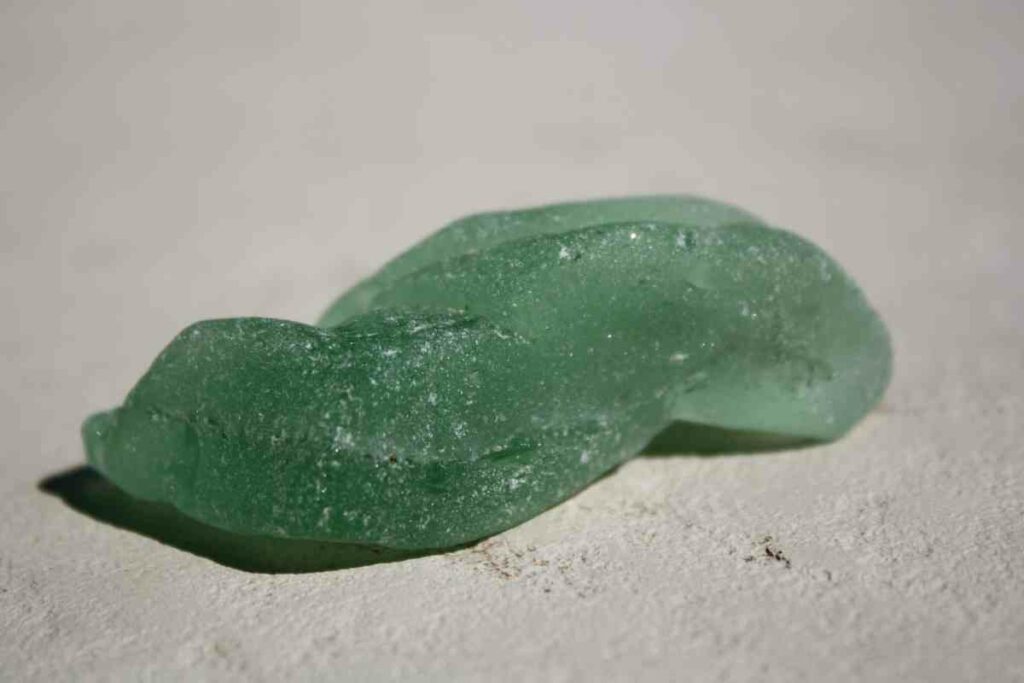
So, sea glasses of these colors are easily available.
- Green: Green glass bottles were widely used for beer and sodas in the 1950s. As such, two out of every ten sea glasses are likely to be green.
- Brown: 3 to 4 in every ten pieces of beach glass are brown. Brown glasses were mass-produced for utilitarian use. They were mostly used for beer bottles and cleaners.
- White: White, or clear glass, is very common. It is arguably the most common sea glass color. Most of it in the sea originated from clear windowpanes and is, therefore, angular. Out of ten pieces of sea glass, four of them are likely to be white.
How To Tell If Sea Glass Is Legit
Due to the high demand for sea glass, there has been an increase in the production of artificial sea glass.
These are created in a workshop and can easily be found in any color. Therefore, you should be able to differentiate real sea glass from artificial ones.
Genuine sea glass has a frost appearance due to exposure to salt and water. Also, it is relatively thicker than normal pieces of glass, as items back then would be made from thicker products.
Sea glass pieces are also uneven in shape and size and also quite rough. The texture is thanks to exposure to natural elements.
Final Words
Sea glasses are beautiful gems that are a result of both human and natural activities.
They are basically pieces of glass that waves and currents in the sea have refined. Sea glasses come in different colors, some of which are rarer than others. The rarity of colors in beach glass determines its value.

